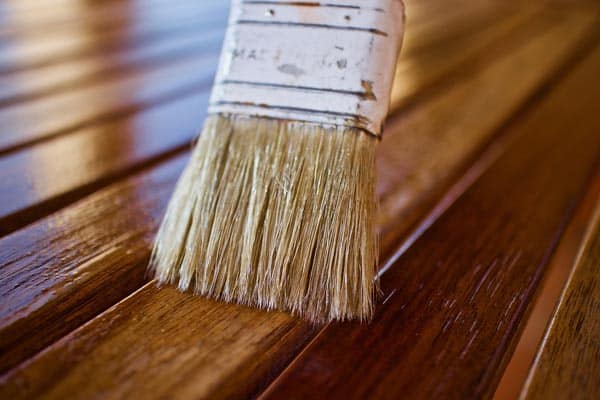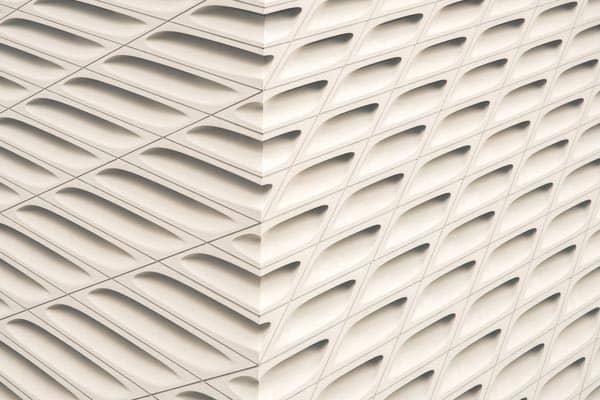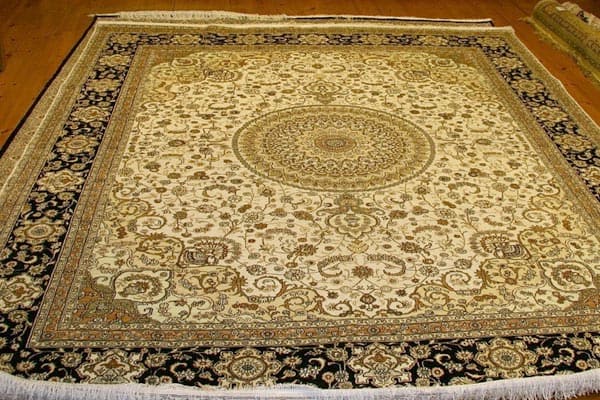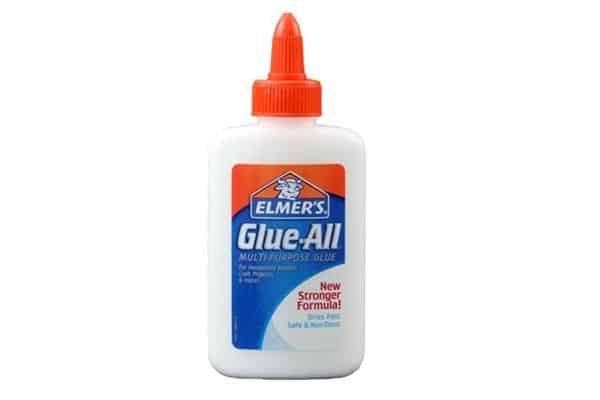Wood Putty Vs. Wood Filler: Understanding the Difference
When it comes to woodworking, two of the most commonly confused tools you have at your disposal are wood filler and wood putty.
However, they are two very different products, and each one has different applications and formulas.
They allow you to fix wood surfaces instead of replacing them, but you want to use the correct one for the job to ensure you get a professional-grade finish.
The wood filler typically comes water-based to wood putty’s oil base. You can sand wood filler and usually use it on unfinished wood, and wood putty works better for finished wood because you can’t sand it.
Wood putty can work in any environment, but you don’t want to take wood fillers outside because they’re not as durable and will fail.
We want you to get your renovations done perfectly, so you have to have a clear idea of the differences in the products.
You’ll also have to understand how each one works, and we’ve outlined the biggest points to consider below.
Wood Putty Verses Wood Filler: Use and Definition
The main difference between the two items is how you apply them, and we’ll expand on this more below for you.
Wood Putty
Wood putty is often called plastic wood, and it’s an element that you use for filling in imperfections in wood-like nail holes.
It usually features a binder and wood dust in the makeup, and it takes a slightly longer time to dry. After it dries, it’ll harden, so you might have to sand it to smooth it out.
After staining and varnishing a piece of wood, now is the time to apply wood putty. Since it can be hazardous to apply to raw wood, most people use it to fill nail holes and cracks.
It’s also a good option for use on outdoor furniture, and it’s resistant to sun and rain damage even as it shrinks.
You should note that some types of wood putty will stay visible after you smooth it out, so you have to be very careful when you finish and apply it.
Wood putty is very common because it’s very affordable while offering adhesive properties. It’s also long-lasting once you buy it, and you can easily make it usable again by applying acetone if it dries out before you manage to use it all.
Wood Filler
Wood filler is a product that gets used to create a smooth surface for you to perform repairs like filling in holes.
It’s different from wood putty because you’ll apply this product before you finish or stain the wood.
It features lacquer, latex, epoxy, and clay in the makeup, and it has a neutral color that you can tint to fit your current project. It’s ideal for finishing nails after you drive the nails into the wood.
You can mix sawdust with the filler to give it a more natural finish, and the most common type you’ll purchase is latex wood filler.
It’s very easy to clean as you go, and you can use a polyurethane filler if you have pre-finished furniture because it protects the surface.
Wood fillers also aren’t expandable, and they will crack if your wood expands or cracks, so they’re not good for outdoor projects.
The sunlight can also make the filler dry out and shrink, and there aren’t any adhesive properties in it like you’ll find in wood putty.
This is a good choice to have if you’re looking for something that dries very quickly once you apply it because it dries in under 24 hours.
So, it can help you move your project along relatively quickly compared to wood putty.
Wood filler is also more versatile than putty because you can easily use it on a host of different finishes and have it blend in beautifully.
Wood Putty Verses Wood Filler: Formulas
The formulas for the two products are also big sticking points because they’re so different. Knowing what they have will help you decide which one you need for your next project.
Wood Putty
Your wood putty will typically come to you in a can when you purchase it, and it has a texture that is very similar to a stiff dough.
It’ll still dry very quickly when you start applying it, and most brands recommend that you mix it with a hardener before you use it. In
In the formula, wood putty comes with a host of solvents that make it able to resist shrinking when you expose it to different conditions.
It also comes with natural wood fibers mixed in that make it blend into specific wood species, and it tolerates stains to a certain point. After applying it, the wood putty could look completely invisible, or you’ll be able to see it slightly.
Wood Filler
Wood filler usually comes contained in a plastic tub, and it gets colored before you buy it to help it compliment different species of wood.
Also, there are formulas where you can color them to allow the filler to powder-match stain colors to help it flawlessly blend in.
Most wood filler is rubbery and pliable, and this makes it an excellent choice for filling in small holes. It can be flexible to expand or contract right along with the wood to avoid cracking.
However, there are formulas that will dry to a much harder consistency, and you want to use these products to fill in large voids or when you want to paint the surface at the end of the project.
You can get solvent-based or water-based when you start looking at wood fillers, and the latter is very simple to work with since it’s easy to clean up when you finish.
However, the solvent-based options are ideal if you have a huge project to use them on. In spite of the fact that most fillers are suitable for use indoors, there are some solvent-based ones that you can use outdoors.
Under your wood filler, you’ll find a wood grain filler. You use this product to prepare open-grained wood for the final finishing application because it has a liquid consistency that is very thick.
You’ll put this liquid in the pores and grain lines in the wood to give yourself a flat surface to work with.
Since it dries hard, you’ll go back and sand it to ensure the surface is completely smooth before applying the topcoat.
Woodgrain filler also comes with two formulas. The water-based wood grain filler is easy to use because cleanup is easy. The solvent-based one works best for deeper pores, but you want to be careful because it can be messy.
Wood Putty Verses Wood Filler: Types
There are also types of wood filler and wood putty you can pick from, and each one of them will function slightly differently. You can get:
Epoxy Wood Filler
Epoxy wood filler is a two-part wood putty that gets limited for use on unfinished wood because it needs a huge amount of sanding.
It’s inclusive of two different components, including a hardener and a resin. A lot of the epoxy wood fillers emit very low odor traces with lower amounts of volatile organic compounds.
This is a quick option that is ideal for filling knots, but it’s uncommon to use on larger projects because it’s expensive.
Silicone Wood Filler
This is a product that works very well on hardwood floors because it’s able to contract and expand with the humidity levels without cracking.
You’ll typically get it in a caulking tube when you buy it, and you can use it in a traditional caulking gun.
The advantage of this product is that it is very simple to apply, and it does an excellent job of hiding unwanted holes and small gaps.
Latex Wood Putty
This type of wood putty has been around for decades, and it comes packaged in a small tube.
When you use this type of putty, it’ll create a very tight bond between the wood and the water, and it can create a strong bond. You’ll also have to have non-drying oils like linseed oils when you apply them.
Painter’s Putty
Contractors commonly use this type of wood putty between coats of oil, and it features linseed oil, calcium carbonate, and a universal colorant.
This is unique because you don’t have to finish or coat it after you use it. It does dry slowly and collects a lot of dirt that can be very noticeable in bright colors, and it feels the same as using a window glazing compound. DAP is a brand of painter’s putty that you’ll use to glaze, fill holes, or fill cracks.
Pre-Finished Wood Putty
This is a newer product that works well for use on pre-finished flooring or floors that you’re already finished. It’s very quick to dry out, so you have to leave the container closed.
It’ll get ruined if you expose it to freezing temperatures, and it has a slower sink rate. It’s a pre-finished wood putty that is the same as latex putty, but it has a satin water-based polyurethane in it.
How to Use Wood Filler
Wood filler works well for smaller projects, and you can apply it to smaller cracks and holes in unfinished wood during new projects.
You should apply it without flattening it out too much because you can go back later and sand it down smooth before finishing it with a sealer and a stain.
How to Use Wood Putty
Wood putty is technically a lot easier to use than wood fill because you use it and let it dry. It has a thicker composition than wood filler, so you can use it for repairs like filling holes in the door frames after you rewire a room.
If you plan on covering the frames with wood again, you can fill them with wood putty and cover them.
It’s also good for using and forgetting about it, and you can’t do this with wood filler. So, it works well for daily home repairs.
Bottom Line
Both wood filler and wood putty are very common items to have on your arsenal to help you take on your projects. You can take the information in this guide and use it to decide which one you need on your next project.






